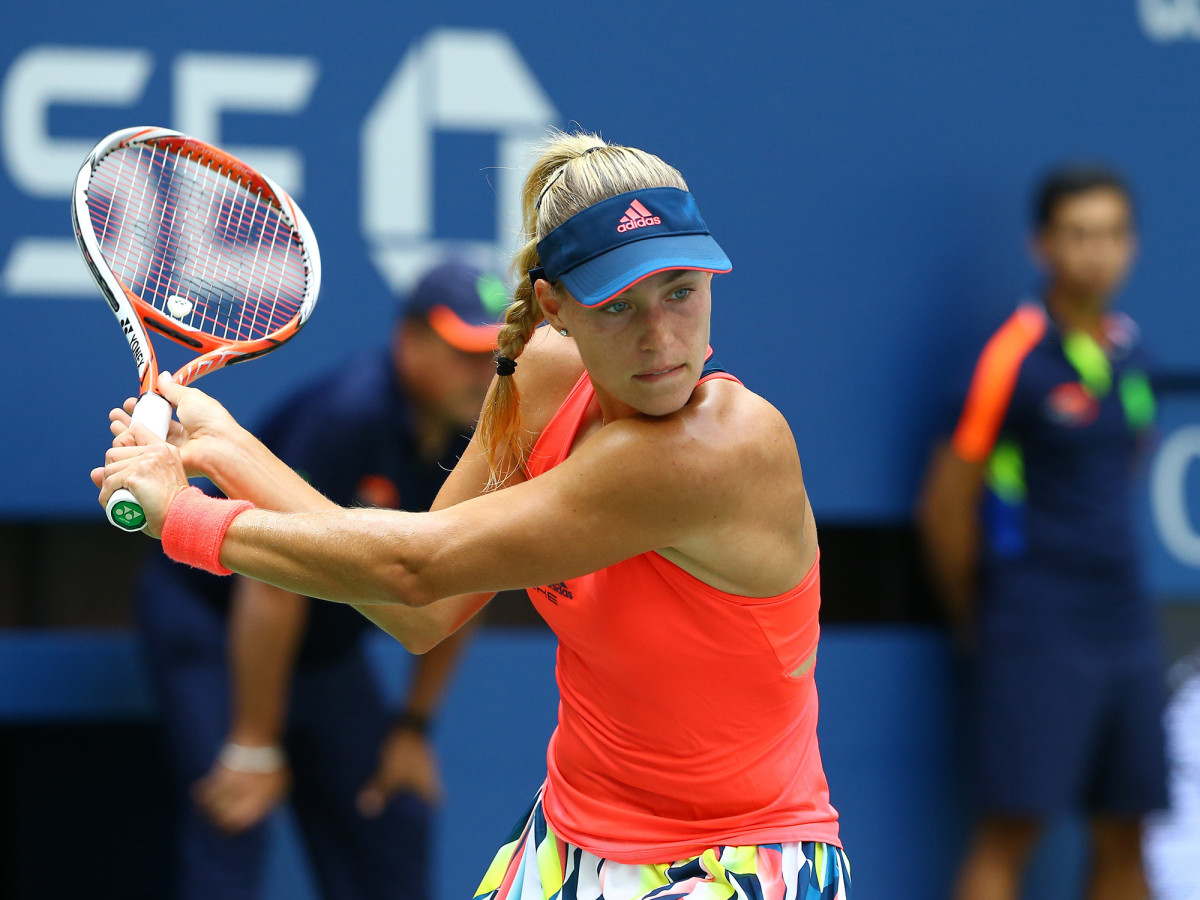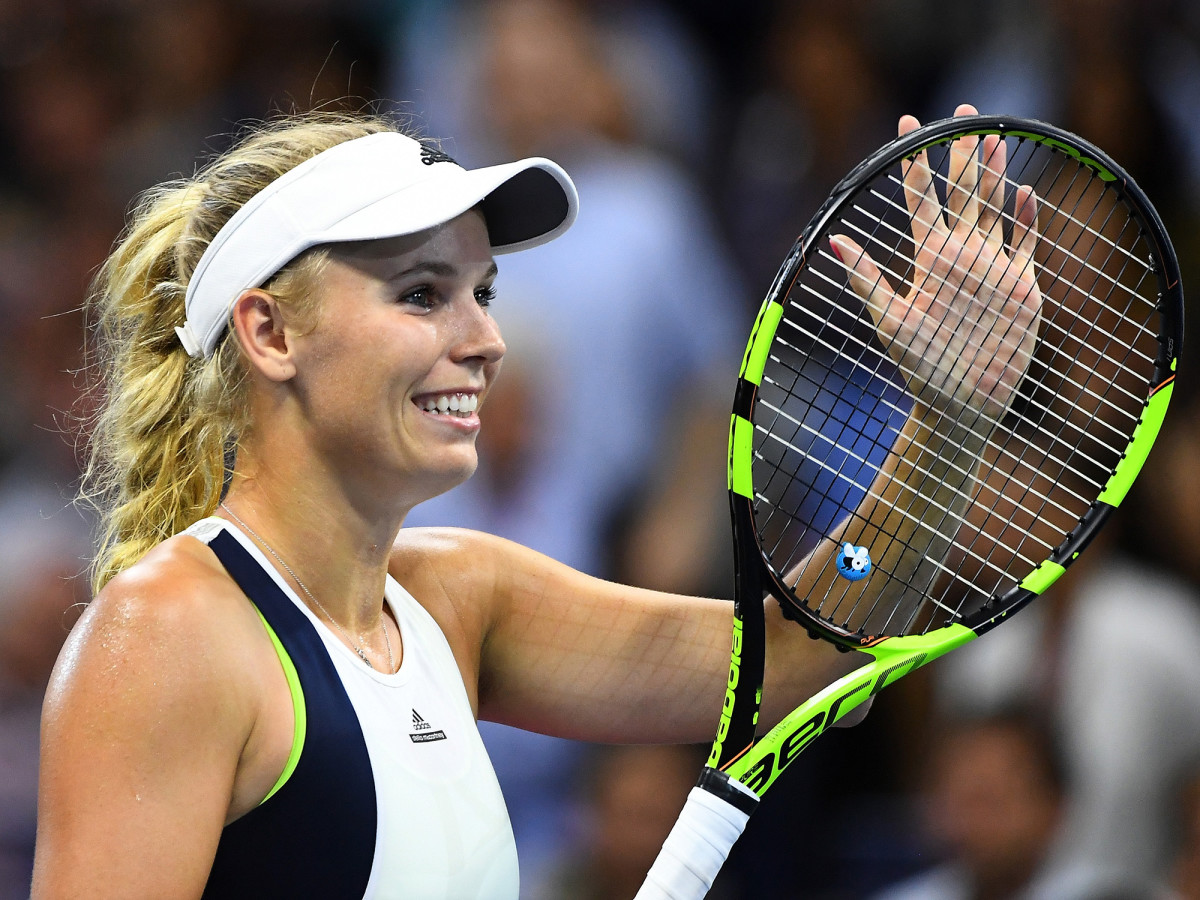Wozniacki to meet good friend and No. 2-seed Kerber in U.S. Open semifinals

NEW YORK – New Yorkers are no strangers to comeback stories. They cheered as a hobbled Willis Reed limped on the court in Game 5 of the 1970 NBA Finals to help lift the Knicks to their first title, and roared as the Giants strung together an improbable two-minute drive late in Super Bowl XLII to knock off the undefeated Patriots. That’s what makes unseeded Caroline Wozniacki’s resurgence at this year’s U.S. Open so fitting.
Wozniacki, who advanced to the semifinals in New York after a dominant 6-0, 6-2 win over Anastasija Sevastova, is from Denmark, but aligns herself with the people of New York. She owns an apartment in downtown Manhattan, frequents New York Fashion Week and ran the New York City Marathon two years ago. She even prefers training in public, on courts along the West Side Highway, when she’s in town.
“I kind of like being there, because I feel like a proper New Yorker,” she said Tuesday.
What she’s in the midst of could be added to a laundry list of comebacks set in the city.
The former World No. 1 and two-time U.S. Open finalist has had a dismal year riddled with injuries, dropping her to No. 74 in the WTA rankings ahead of the tournament. But the 26-year-old has found her form in New York, dispatching of two seeded opponents—No. 9 Svetlana Kuznetsova and No. 8 Madison Keys—en route to her fourth career semifinal at a major. She’s brought back an aggressive groundstroke game and her serve, which she says has been “kind of on and off” throughout her 11-year career. With her win over Sevatsova, Wozniacki became the 20th unseeded player to advance to a Grand Slam semifinal since 2001 Wimbledon, and only the sixth player ranked outside the top 50 to advance to the U.S. Open semifinals since 1975.
Backed by her belief, Kerber finds solution to Vinci's complex game to reach semifinals
Standing in the way of a fairytale trip to Wozniacki’s third U.S. Open final is No. 2-seed and close friend Angelique Kerber. The 28-year-old German is on a mission of her own, trying to supplant Serena Williams from the No. 1 ranking, a spot she has held for 186 weeks. Kerber can claim the spot if Williams is eliminated before the final. If both players make it to the title match, Williams will need to beat Kerber to retain her ranking.

“I'm sure that she is going to do everything to get that ranking,” said Wozniacki of Kerber. “She's had a great year so she will be tough to beat, but I'm going to do my best. That's all can I ask for myself.”
Thursday evening’s semifinal match will be the 13th meeting between the two in a series that has seen three of the last five matches go the full three sets. Kerber holds an alltime 7–5 advantage over Wozniacki, though the two have split their last four meetings.
“She is strong again; she had great wins here,” Kerber said of her opponent. “It will be a good semis.”

Wozniacki’s comeback may not be on par with Reed’s or the Giants’, but in a city that’s always willing to get behind an underdog, the Dane should feel right at home on the hardcourt at Arthur Ashe.
“I definitely do feel like I have an advantage there. I sleep at home in my own bed, have home-cooked food, and have my friends and family here,” she said. “I also feel like I have a bit of a home court advantage when I step out on court. The crowd is always supporting me and is sweet to me. I think it helps I played so well here in the past. It's just a great combination.”
